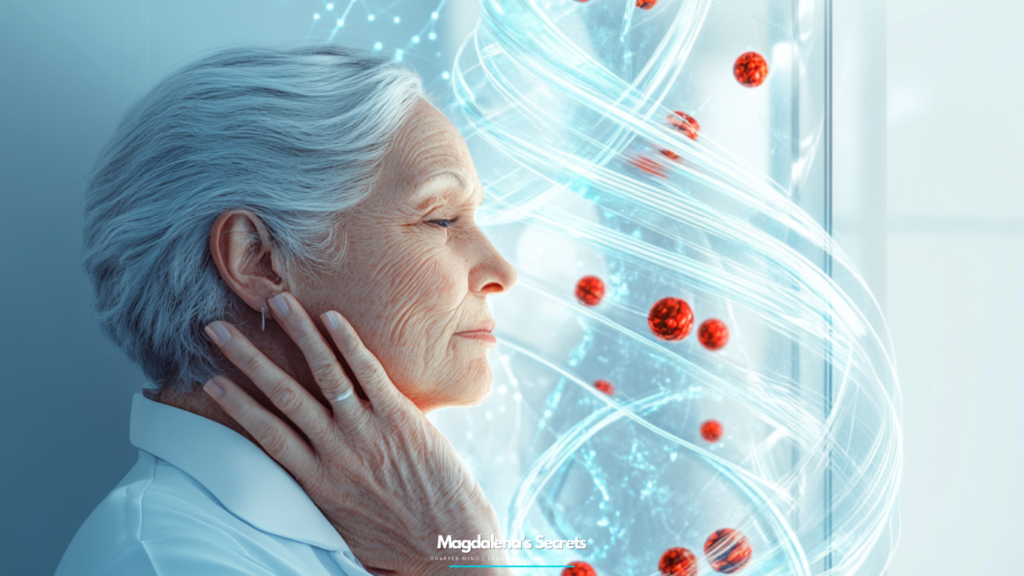One of the most surprising and frustrating changes many women face during menopause is a sudden rise in cholesterol levels—even when their diet, exercise habits, and lifestyle haven’t changed.
For many, bloodwork around midlife shows elevated LDL (“bad” cholesterol), total cholesterol, or triglycerides, often alongside new symptoms like hip pain, shoulder stiffness, back discomfort, high insulin, or fatigue.
So what’s happening?
Estrogen: The Silent Protector of Cholesterol Balance
Estrogen does far more than regulate reproductive function. It’s a key player in:
- Lipid regulation
- Insulin sensitivity
- Cardiovascular protection
- Inflammation control
Before menopause, estrogen helps maintain a healthy ratio of HDL (“good”) to LDL (“bad”) cholesterol and keeps inflammation in check. But as estrogen drops:
- LDL cholesterol rises
- HDL may drop
- Triglycerides may increase
- Total cholesterol often spikes
This can happen suddenly—sometimes in just a few years—without any change in your lifestyle.
Why Does This Happen?
1. Hormonal Shifts Disrupt Metabolism
Estrogen helps your liver process fats efficiently. When it drops, your liver becomes less effective at clearing LDL cholesterol from your bloodstream.
2. Insulin Resistance Rises
Less estrogen = less insulin sensitivity, even if your diet hasn’t changed. Your body starts storing more fat (especially around the belly), and blood sugar regulation suffers.
3. Inflammation and Joint Pain
Estrogen also helps lubricate joints and calm inflammation. Its decline can trigger:
- Stiffness in hips, shoulders, and spine
- Increased joint pain
- Greater systemic inflammation
Oxidized LDL and chronic inflammation are a dangerous duo—raising heart risk and making menopause symptoms worse.
The Overlooked Role of Vitamin D
Many women in menopause are also low in vitamin D—and that’s a problem. Vitamin D:
- Supports bone strength and mood
- Helps regulate insulin and cholesterol
- Reduces muscle and joint pain
Low levels are associated with:
- Higher LDL and triglycerides
- Poorer blood sugar control
- More musculoskeletal discomfort
Estrogen decline makes it harder to absorb and use vitamin D effectively, so even sunny days and healthy diets may not be enough.
What You Can Do: Evidence-Based Solutions
1. Get Your Labs Checked
Monitor yearly:
- Lipid panel (LDL, HDL, total cholesterol, triglycerides)
- Fasting insulin & glucose
- Vitamin D
- hs-CRP or other inflammation markers
2. Support Estrogen (When Appropriate)
Ask your menopause-trained provider about Bioidentical Hormone Replacement Therapy (BHRT). In eligible women, it can:
- Improve cholesterol ratios
- Ease insulin resistance
- Relieve joint pain
3. Prioritize Anti-Inflammatory Nutrition
- Eat more: Omega-3s, fiber, leafy greens, legumes, avocado
- Avoid: Seed oils, processed foods, added sugar
- Focus on stable blood sugar over calorie restriction
4. Strength Training & Movement
Muscle supports metabolism, joint stability, and insulin sensitivity.
- Lift weights or use resistance bands 2–4x/week
- Walk daily or add low-impact cardio (cycling, elliptical)
- Stretch or do yoga to reduce stiffness
5. Supplement Smartly
Ask your doctor about:
- Vitamin D3 + K2
- Magnesium glycinate or citrate
- Omega-3 fatty acids
- Curcumin or anti-inflammatory adaptogens
Final Thoughts: It’s Not Your Fault—It’s Biology
If your cholesterol suddenly spikes during menopause, know this:
“It’s not because you failed. It’s because your biology changed.”
By understanding how estrogen, insulin, inflammation, and vitamin D interact, you take back power.
Menopause is a hormonal transformation—not a breakdown. With the right tools, you can protect your heart, stabilize your metabolism, and feel your best through this new chapter.
Because informed women are empowered women.




